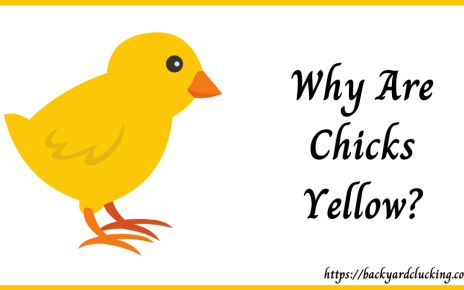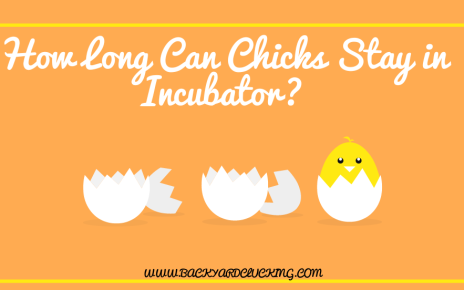If you’re interested in knowing how to take care of your chickens but need help knowing where to start, we can help! Culling chicks is a vital part of poultry farming.
By removing weaker ones, this humane method helps confirm that only healthy birds are part of your flock. In this blog post, we’ll teach you the importance of culling chicks and provide step-by-step instructions on how to do it safely and professionally while minimizing stress for everyone involved.
How to Cull a Chick
Culling is a vital skill in the poultry industry. It involves picking the gender of a chick, which can be done through strategies such as examining its vent, observing feather development, and assessing the color of its beak.
Be careful when using these methods. For example, the vent sexing procedure has a 5–10% error rate. However, feather sexing is only helpful for specific breeds.
The down color method is breed-specific and cannot be used universally. Therefore, it’s still a good idea to consult with a professional or seek professional training if you’re new to this process.
Remember, culling is a subjective decision and depends largely on your goals and capacity to manage your flock. Always ensure the well-being of the birds is at the forefront of any culling decisions.
When Should You Cull A Baby Chicken?
Culling a baby chicken is a challenging but sometimes necessary task. It may be required when a chick is suffering from a disease that is untreatable and causing suffering.
The decision should not be taken lightly. Seek advice from a vet or seasoned poultry keeper to ensure this is the correct action.
Do remember that the welfare of the animal should always be paramount. If a chick is healthy and exhibiting normal behavior, there would be no reason to consider such a drastic measure.
Understand the Reasons
It’s essential to understand why culling is necessary before proceeding. Chick culling is typically done to maintain a balanced ratio of hens and roosters in the flock. It’s also a preventative measure to stop the spread of diseases.
Identify the Chick-to-Cull
Proper identification is crucial. Look for sick, injured, or slow-growing chicks. Male chicks are often culled in egg-laying breeds as they do not produce eggs.
Method of Culling
There are humane methods of culling that cause minimal distress to the chick. The cervical dislocation method is commonly used and is considered humane if performed correctly.
Seek Professional Advice
If you need more clarification about any aspect of the culling process, it’s advisable to seek professional advice. Local agricultural extension services or veterinary clinics can be a good source of information. They can also guide you on the legalities and regulations surrounding culling in your area.
Best Way To Cull A Baby Chick
Culling a baby chick is a sensitive topic that requires careful thought and understanding.
- If you’re in a position where you need to do this, it should be done humanely. Here are some guidelines to follow: (bullets)
- Always consult a professional vet or animal welfare expert before making this decision.
- If it’s agreed that culling is the best option, it should be performed quickly and painlessly.
- Euthanasia methods approved by the American Veterinary Medical Association (AVMA) include cervical dislocation and anesthetic overdose.
- Monitor the chick’s health and behavior closely before making a decision.
- Always prioritize chick health and welfare over other factors.
Remember, the decision to cull should never be taken lightly and is usually a last resort when a chick is suffering with no chance of recovery.
Reasons why do farmers cull chickens for Agriculture:
Disease Control: Farmers often cull chickens to prevent the spread of diseases. Some conditions are highly contagious and can devastate poultry flocks if not managed promptly.
Population Management: Overpopulation can lead to inadequate food resources and chicken aggression. Culling helps maintain a balanced and healthy flock.
Productivity Maximization: Unproductive Chickens, such as hens, no longer lay eggs or roosters surplus to the farmer’s requirements and are usually culled to make room for more productive birds.
Genetic Quality: Culling is used to improve the overall genetic quality of a chick. Farmers may cull birds with undesirable traits to ensure only the best genes are passed down to future generations.
What You Should Do After Culling
Dispose of the culled chick responsibly. You could consider composting or burial, provided these are legal in your region.
Some FAQs
What is the best way to cull a baby chick?
The topic of culling baby chicks can be emotionally charged, and it’s essential to approach it with sensitivity. It is only considered when necessary for the welfare of the chick. Always consult with a veterinarian or a trained professional to ensure it’s done in the most humane way possible.
What is the most humane way to cull a chicken?
The most humane way to cull a chicken is through cervical dislocation done by an experienced person to minimize stress and suffering for the bird.
When should you cull a sick chicken?
Sick chickens must be culled to prevent the spread of untreatable or highly contagious diseases and protect the flock’s overall health and well-being.
Conclusion
Raising and caring for chickens requires knowledge and compassion. It’s crucial to prioritize the welfare of the animal. Culling is a harsh reality of nature and farming, but it should only be done when necessary and with professional guidance.
The ultimate goal is maintaining a healthy, balanced, and productive flock, ensuring each chicken lives without suffering. Awareness of humane culling methods and making sound decisions can help ensure harmony in the coop and the overall health of your chickens.



